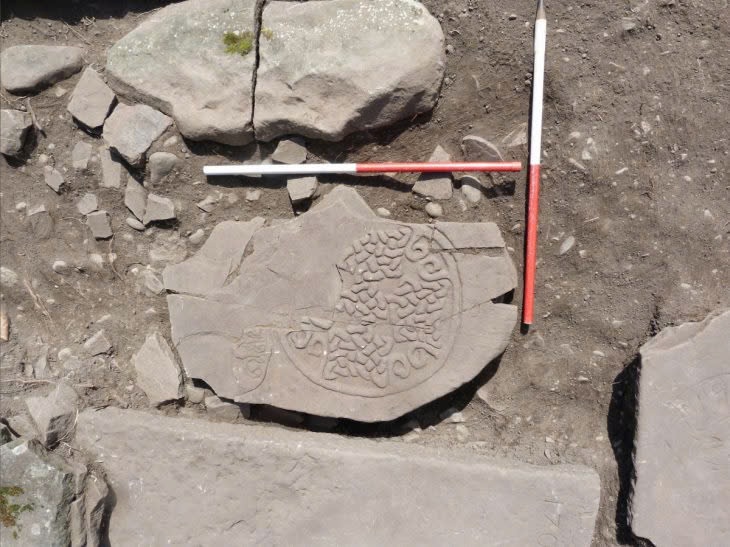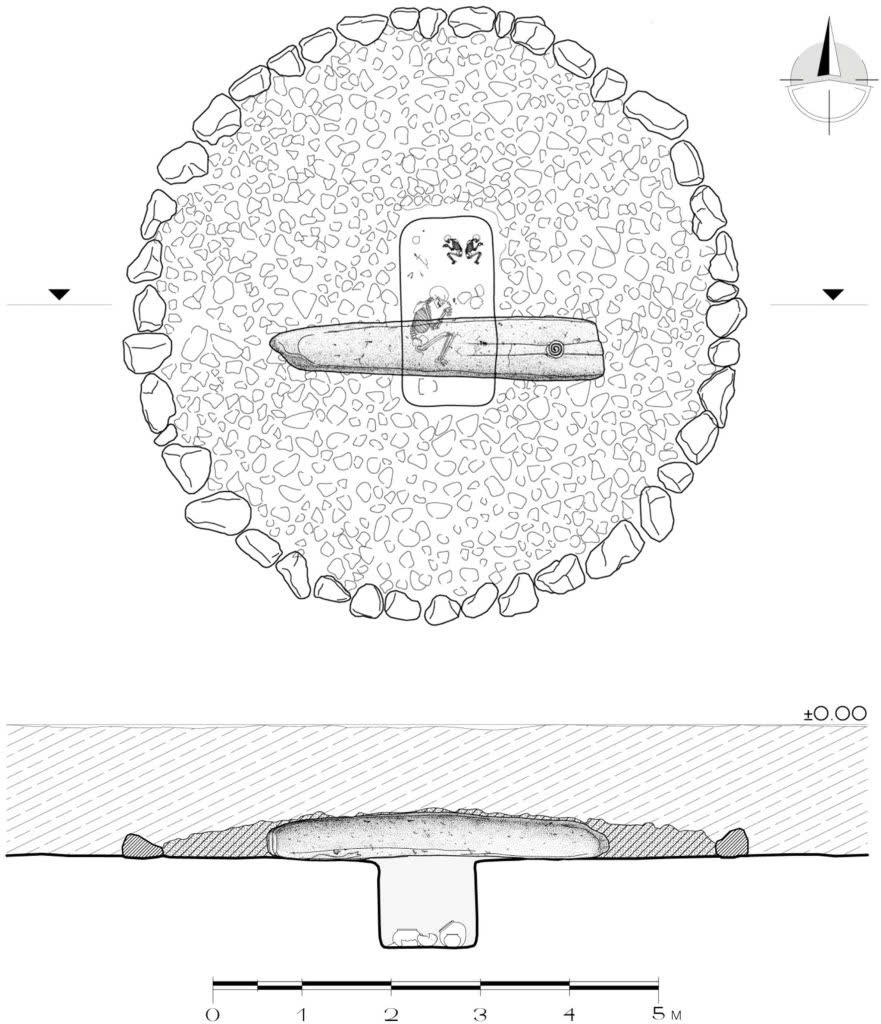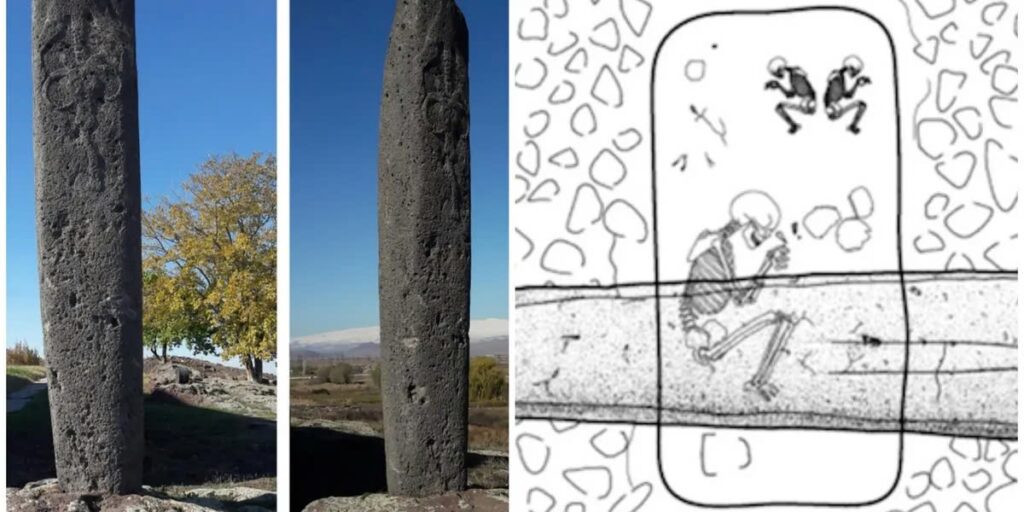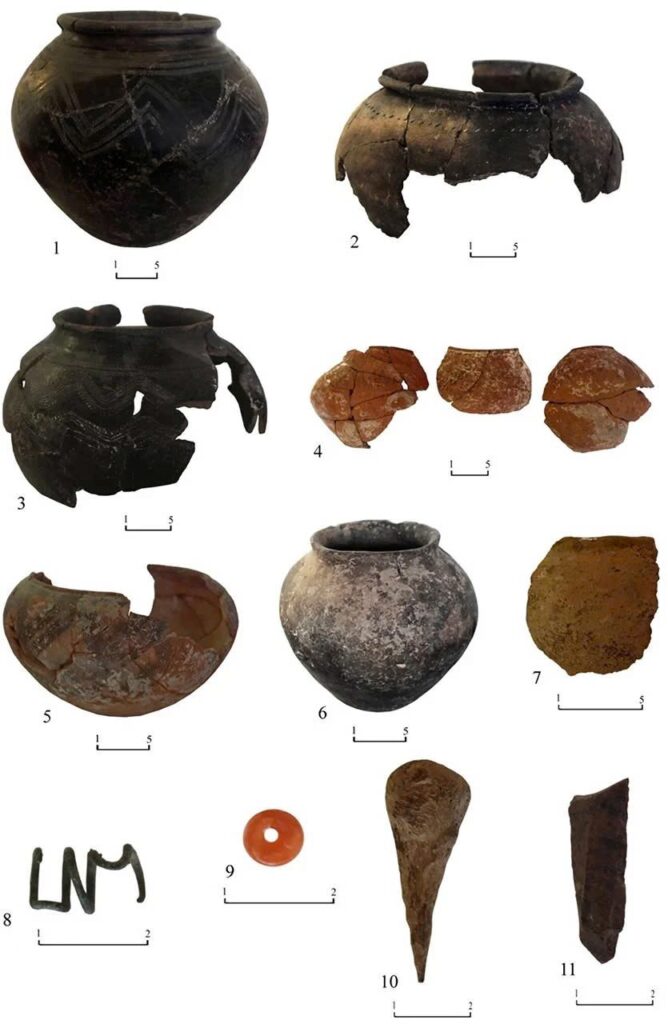A remarkable archaeological discovery has been made as researchers uncovered the remains of two infants buried beneath a massive basalt structure known as a “dragon stone” in Armenia. This finding at the Lchashen site provides new insights into ancient burial practices and the significance of these mysterious monuments.

Dragon stones, or Vishapakar in Armenian, are prehistoric basalt stelae decorated with animal carvings. Primarily found in Armenia and surrounding areas, these monuments have long puzzled historians and archaeologists.

The Lchashen discovery is particularly significant as it marks the first time a burial has been found directly associated with a dragon stone. A 3.5-meter tall stele, featuring an image of a sacrificed ox, was positioned above a grave dating back to the 16th century BC.

Two well-preserved infant skeletons, referred to as Dragon1 and Dragon2, were discovered at the site. Ancient DNA analysis revealed that these infants were second-degree relatives, sharing identical mitochondrial DNA sequences. This genetic information offers valuable insights into the Bronze Age population of the Caucasus region.

This discovery challenges previous understandings of dragon stones and Bronze Age burial practices in Armenia. Researchers noted that the burial of two newborns alongside a monumental stela is unprecedented, suggesting a potential ritual or symbolic significance that was previously unknown.

While many questions remain unanswered, this find opens up new avenues for research into the funerary practices and beliefs of ancient Armenian society. The connection between these infant burials and the revered dragon stone monuments may reshape our understanding of Bronze Age culture in the region.

Video

